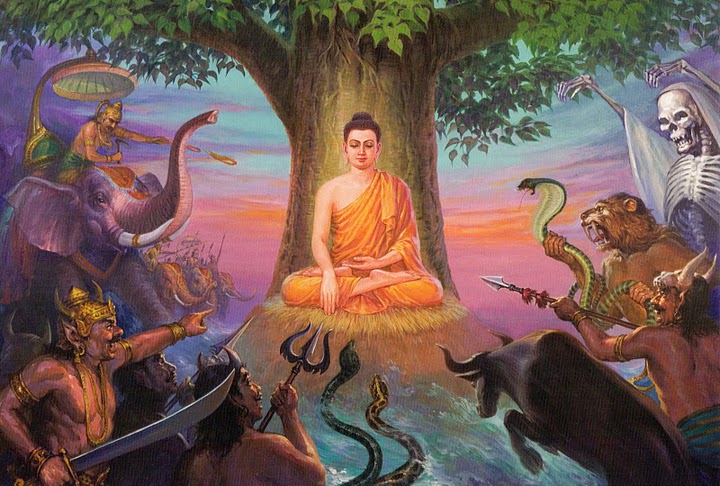Siddhartha Gautama
Siddhartha Gautama, or the buddha, is the sage whose teachings were interpreted to form Buddhism. ‘Buddha’ means awakened one, or enlightened one and is titular for the first awakened being of an age. Siddhartha is the supreme buddha (Sanskrit सिद्धार्थ गौतम | samyaksaṃbuddha) and taught a middle way between the opposing philosophies of indulgence and asceticism in the eastern regions of India in about BCE. Most of the traditions of Buddhism were passed down by oral tradition through monasteries and about 400 years later were committed to writing. The majority of scholars today believe that he did indeed live during the Mahajanapada|महाजनपद era in India thus making him a younger contemporary of Mahavira, the Jain teacher.
The Buddha had teachers, many that are very notable: Alara Kalama, Udaka Ramaputta who appear to have taught him meditative techniques. He was also influenced by many contemporary thinkers like Purana Kassapa, Makkhali Gosala, Ajita Kesakambali, Pakudha Kaccayana, Sanjaya Belatthaputta, and the Vedic Brahmins. There are many traditional biographies that historians disagree with, but that are very interesting for understanding the religion as a whole.
The Buddhacarita is an epic Sanskrit poem by Asvaghosa, who wrote in classical Sanskrit. The Lalitavistara Sutra, Mahavastu, and the Nidanakatha are other accounts of the Buddha’s life, leading to different traditions and accounts.
He was born a Sakya, either in Uttar Pradesh India, Nepal, or Piprahwa, but tradition states him as being born in Lumbini, Nepal. The Buddha denied being man or god, but the stories of the scholars bring light to the man after whom the religion is based.
His story was elaborated upon time and again in tradition after tradition, but the ending is always the same: Siddhartha sits under the Bodhi tree for 49 days and becomes enlightened. The buddha awakes. He realized the cause of suffering and how to eradicate it with use of the four noble truths striving to attain Nirvana|निर्वाण or the ultimate stillness. Hindus refer to this as an extreme egolessness, or quietness of the mind and unison with Brahman. The buddha described it as perfect peace.
The buddha lived and taught for a long time, and his death seemed to be somewhat voluntary, though his last meal might have been pork. Tradition even dictates that he may have been somewhat sexist, refusing women into his following at first. At first, the buddha didn’t even want to teach! He doubted that human could grasp the subtlety of his message, or the intricate complexity of its meanings.
The authenticity of much of the buddhist religion’s traditions are in question, but they seem to be at least based on the original Gautama. The core principle of buddhism, dhyana, or object-based meditation is maintain across all traditions, as is the concept of liberating insight. However, scholars believe that the buddha’s teachings were likely personal and that the eightfold path and four truths may have been expounded upon after the buddha’s passing. Many find evidence only for a middle path or middle way. Some Hindus regard the buddha as the ninth incarnation of Vishnu.
The stories you have heard and likely largely exaggerations of the buddha’s birth and upbringing. There really was a buddha, very long ago, though his teaching was likely very different from its depiction today and was likely very personalized to each individual, though he never claimed to be a god. This remains one of the core tenets of Buddhism, that there is no god and that the universe is somewhat tailored to each of us individually, though we are part of a larger whole. Humans are subject to the wild laws of karma and continue in samsara until we achieve moksha, or liberation. For more on the religion, please see my article on buddhism.


